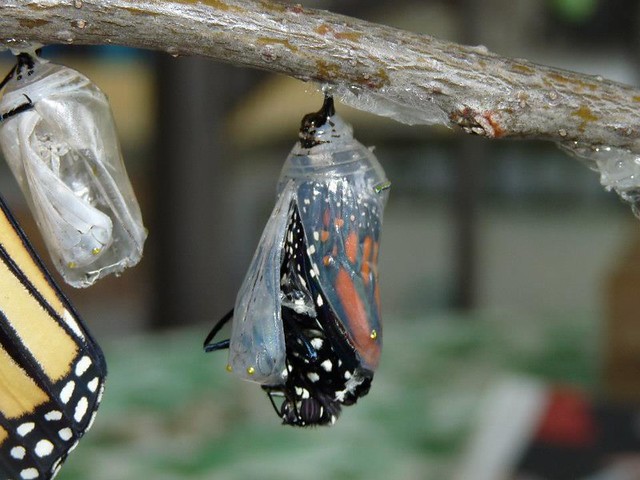John it is fun ! I enjoyed your story about the moth ! Do you grow tropical milkweed ? We have found Monarchs prefer it over any other milkweed. No, I've never tried that. Didn't know there was a different kind from what I have locally. However, in years that the Butterflies are plentiful, all the roadside Milkweed patches always have a few caterpillars. It's the only plant around here that the caterpillars eat and they seem content enough. Dot, you're not far from me, in Michigan. There has got to be caterpillars on your roadside Milkweed plants too. Sometimes you don't see the caterpillars; but, you can see where they've been munching on the leaves. Just keep turning over leaves and you'll find them.
A tip on catching the emerging..the morning when they turn black and you can see their wings..birth is within a few hours. Yes, I remember that; but, once they do begin to emerge, it's all over in minutes. So, if you "blink", you can easily miss it.Ours usually hatch between 11 am and 2pm. I did not know, or remember that the time of day helps. I'll keep that in mind. Thanks!






